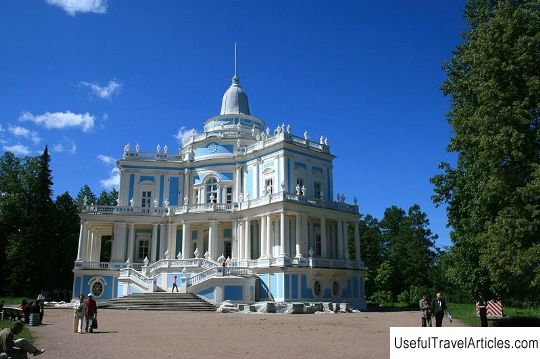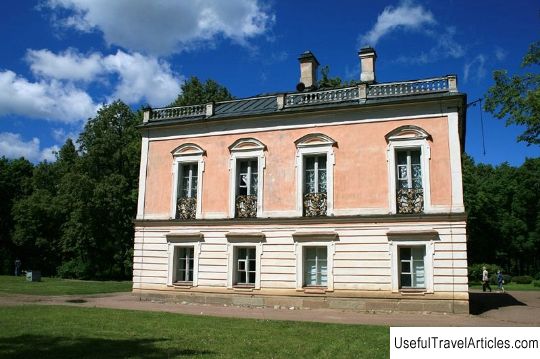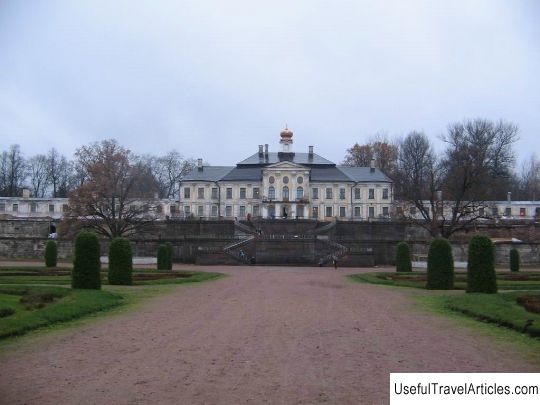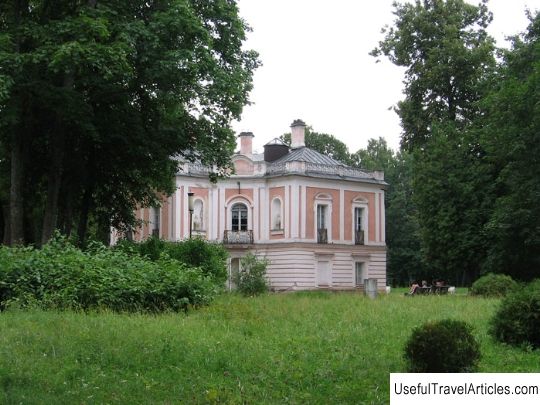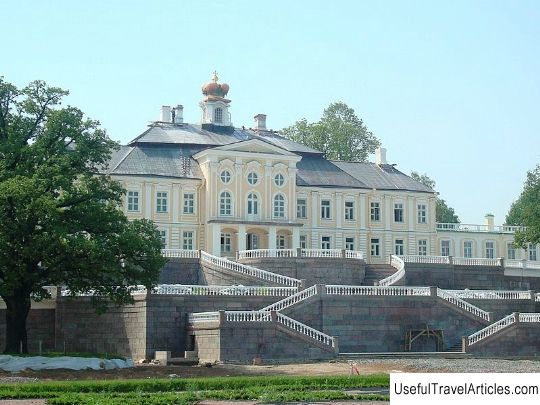Chinese Palace description and photos - Russia - St. Petersburg: Lomonosov (Oranienbaum)
Rating: 8,7/10 (2343 votes) 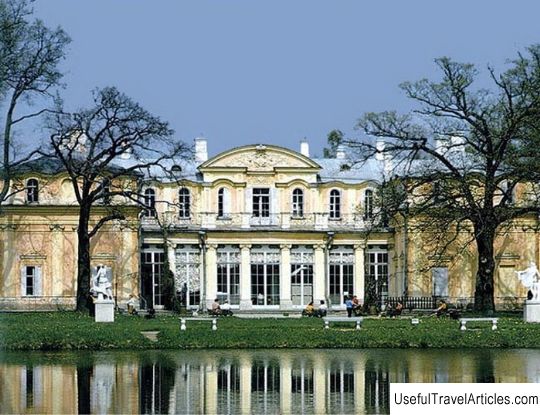
Chinese palace description and photos - Russia - St. Petersburg: Lomonosov (Oranienbaum). Detailed information about the attraction. Description, photos and a map showing the nearest significant objects. Photo and descriptionThe Chinese Palace is located in the depths of the Upper Park of the Oranienbaum palace and park ensemble and is surrounded by greenery on all sides. The palace is part of the “Own Dacha” complex of Empress Catherine II. It was built in 1762-1768. designed by the Italian architect A. Rinaldi. Initially, the Chinese Palace consisted of one floor. Only in the middle of the 19th century. he got a new look. According to the project of A.I. Shtakenschneider and L.L. Bonstedt was added to the second floor, anti-chambers were added to the ends of the building from the west and east, a balcony appeared, under which a glazed gallery was brought up, which connected two projections on the south side of the building. The architectural solution of the building is characterized by restraint and rigor, but, despite this, its interior decoration is distinguished by refinement and festivity of decoration. A significant part of the painting collection of the palace is made up of plafonds, which were painted especially for this room. Thirteen plafonds were made by the leading Venetian masters of the Academy of Painting and Sculpture (D. Maggiotto, G. Diziani, D. Guarana, F. Cugno and D.B. Pittoni), who were grouped around the great painter-decorator of that time D.B. Tiepolo. S. Torelli and S. Barozzi created four more plafonds. These masters worked directly in the Chinese Palace, they were used to decorate most of its interiors. The Hall of the Muses, which is also called the Picture Gallery due to the abundance of picturesque decoration, is distinguished by a special grace. Its walls are decorated with tempera paintings by S. Torelli, on which nine Muses are depicted in a frame of graceful and light molding against the background of clouds. Also, in the technique of tempera, picturesque compositions of the ceiling are made, which is crowned with the plafond "Triumph of Venus". The Glass Bead Cabinet is also distinguished by the originality of the decoration, which has almost completely preserved the decoration of the 1760s. The walls of this room are divided by gilded carved frames into several separate panels. There are only twelve of them: ten are located on the walls of the office and two desudeports. They represent canvases on which embroidery is made with bugles (from tubes of milk glass), as well as with fleecy multi-colored silk (chenille - from the French "chenille"). Intricate compositions with fantastic birds in the middle of a fantastic landscape are visible against the sparkling background, which is framed by a light and mobile floral ornament. The work on this panel lasted about two years: from 1762 to 1764. It was embroidered by nine Russian gold embroiderers under the guidance of Marie de Chelles, an actress of a French theater company. Drawings for the production of glass beads were made by the "free painting master" Serafino Barozzi, who worked in St. Petersburg, in 1762. The glass beads were made at the Ust-Ruditsk mosaic factory, organized near Oranienbaum by M.V. Lomonosov. Oriental motifs are most vividly embodied in the interior of the Big Chinese Study: the walls are decorated with inlaid wooden panels made using the marquetry technique, which is a mosaic of plates of different types of wood. The panel is inlaid with walrus bone plates. The panel depicts gallant scenes from Chinese life against the backdrop of a colorful landscape. The compositions were created by a group of Russian masters under the leadership of G. Stalmeer, probably according to drawings by S. Barozzi, since it was he who painted the plafond for this hall, called the "Union of Europe and Asia", he also painted the ceiling panels. The dominant place in the decoration of the portrait painting is occupied by portrait painting. It is represented by twenty-two portraits by P. Rotary, which A. Rinaldi harmoniously integrated into the interior. The rare parquet floors of the Chinese Palace deserve special attention. Initially, during the construction of the palace according to the project of Rinaldi, the floor was made of artificial marble (stucco). The work was supervised by the Italian "plaster master" Alberto Giani. In the period from 1771 to 1782. work was carried out to replace the floors with inlaid parquet, which was also made according to the drawings of Rinaldi by the "carpentry masters" I. Petersen., I. Schultz, J. Langi and Witte together with the Russian joiners Zinoviev, I. Kuzmin, Gorshkov, Krasheninnikov, Konovalov, Kolpakov, Demidov and others.           Topic: Chinese Palace description and photos - Russia - St. Petersburg: Lomonosov (Oranienbaum). |
